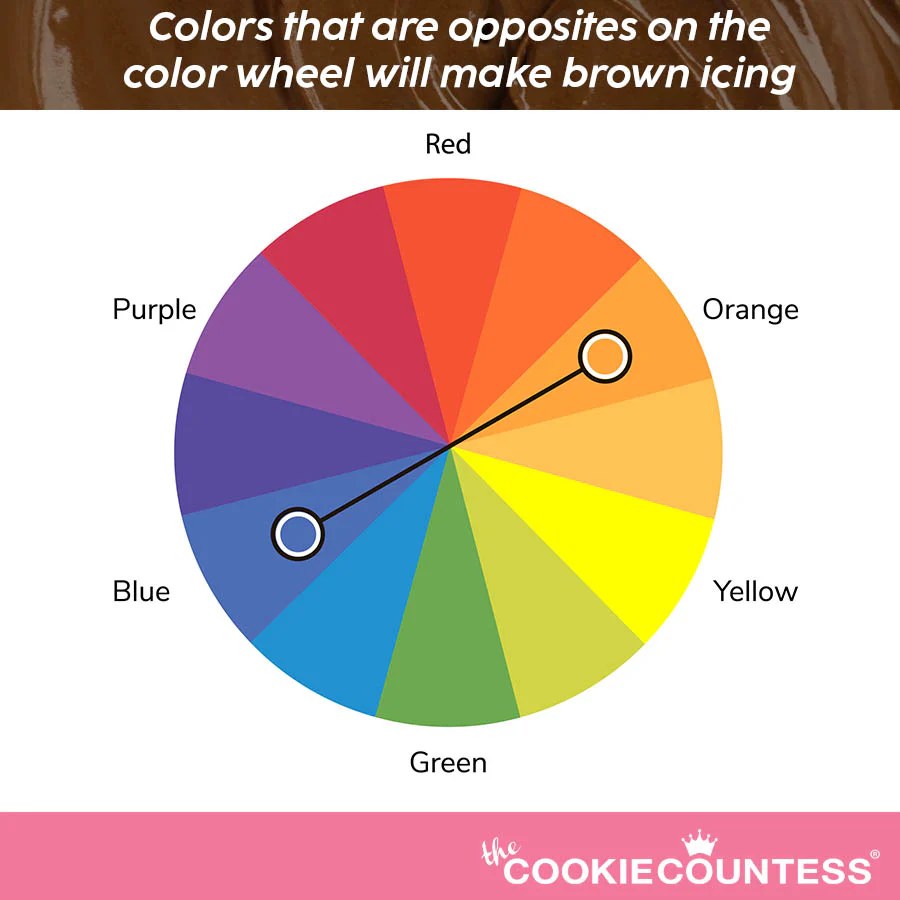Impact of Different Food Coloring Brands

What color food coloring makes brown – Creating the perfect shade of brown with food coloring can be surprisingly tricky. The final color depends heavily not just on the ratios of colors mixed, but also on the specific brands used. Different brands employ varying chemical compositions and concentrations, leading to noticeable differences in the resulting brown hues.
Achieving brown food coloring often involves a mix of red, yellow, and blue; it’s all about balancing those base colors. Interestingly, understanding color mixing helps with other shades, like purple, and if you’re curious about a precise recipe for that vibrant hue, check out this guide on how to make purple food coloring. Ultimately, mastering the art of food coloring combinations, whether for brown or purple, relies on experimentation and understanding the primary colors’ interactions.
Color Intensity and Shade Variations
The intensity and exact shade of brown achieved vary significantly depending on the food coloring brand. For instance, using a highly concentrated brand might result in a deep, almost black brown, while a less concentrated brand might produce a lighter, more reddish-brown, even with the same proportions of red, yellow, and blue. This difference is primarily due to the pigment concentration and the specific dyes used in each brand’s formulation.
Chemical Composition and its Effect on Brown Shade
Food coloring brands often use different combinations of dyes to achieve their colors. These dyes, such as Yellow 5, Yellow 6, Red 40, Blue 1, and Blue 2, each have unique properties that influence the final brown shade. For example, one brand might rely heavily on Yellow 5, creating a warmer, yellower brown, while another might utilize more Blue 1, resulting in a cooler, more grayish brown.
Even seemingly minor variations in the chemical composition can lead to substantial differences in the resulting color. The presence of other additives, such as preservatives or stabilizers, could also indirectly affect the color’s final appearance.
Comparison of Food Coloring Brands, What color food coloring makes brown
| Brand Name | Color Intensity | Shade Description | Observed Inconsistencies |
|---|---|---|---|
| Brand A | High | Deep, almost black brown | Slight variation in shade depending on batch |
| Brand B | Medium | Rich, reddish-brown | Consistent shade across batches |
| Brand C | Low | Light, brownish-tan | Required significantly more drops to achieve desired shade |
| Brand D | Medium-High | Warm, yellowish-brown | None observed |
Achieving Specific Brown Shades

Creating the perfect brown in baking or crafting requires understanding the interplay of colors. Different combinations of food colorings yield surprisingly diverse shades, from the rich depth of chocolate to the warm glow of caramel. Let’s explore how to achieve these specific brown hues.
Chocolate Brown
To achieve a deep, rich chocolate brown, we’ll use a combination of red, yellow, and blue food colorings. The red provides warmth and depth, the yellow adds richness, and a touch of blue helps balance the other colors and prevents it from looking too orange.
A good starting point is a 2:1:1 ratio of red, yellow, and blue. Start with a small amount of each color and gradually add more until the desired shade is reached.
Imagine the resulting color: a deep, almost black brown with subtle reddish undertones. The texture would appear smooth and even, ideal for rich chocolate frosting or a decadent cake. The color is reminiscent of dark, bittersweet chocolate, inviting and decadent.
Caramel Brown
Caramel brown is lighter and warmer than chocolate brown. This shade is achieved by focusing more on yellow and brown tones, with a touch of red to add depth and complexity.
A suggested ratio is 3 parts yellow to 1 part red and a tiny dash of brown. Remember, less is more with food coloring; you can always add more, but you can’t take it away!
Picture a light, warm brown with golden undertones. Think of the color of melted caramel – smooth, glossy, and inviting. The texture would be slightly lighter than the chocolate brown, suggesting a less intense flavor profile.
Reddish-Brown
A reddish-brown is achieved by emphasizing the red tones in the mixture. This shade is perfect for creating the illusion of a rustic, earthy feel.
Start with a base of red food coloring, adding small amounts of brown and a touch of yellow to soften the intensity and create depth. The ratio might be 4:1:1 of red, brown, and yellow.
Visualize a warm, earthy brown with prominent reddish hues. This color evokes the feeling of autumn leaves or rich soil, possessing a natural and comforting quality. The texture would be similar to the other shades, smooth and even. The reddish-brown offers a more vibrant and intense feeling compared to the other browns.
FAQ Overview: What Color Food Coloring Makes Brown
Can I use only brown food coloring?
While you can use pre-made brown food coloring, mixing your own allows for greater control over the shade and intensity.
What if my brown is too dark?
Add a small amount of white or yellow food coloring to lighten it gradually.
How can I prevent my brown from looking muddy?
Use high-quality food coloring and avoid overmixing. Start with small amounts and add more gradually.
Does the type of food affect the final brown color?
Yes, the pH of the food can slightly alter the final shade. Experiment to see how it affects your recipe.
